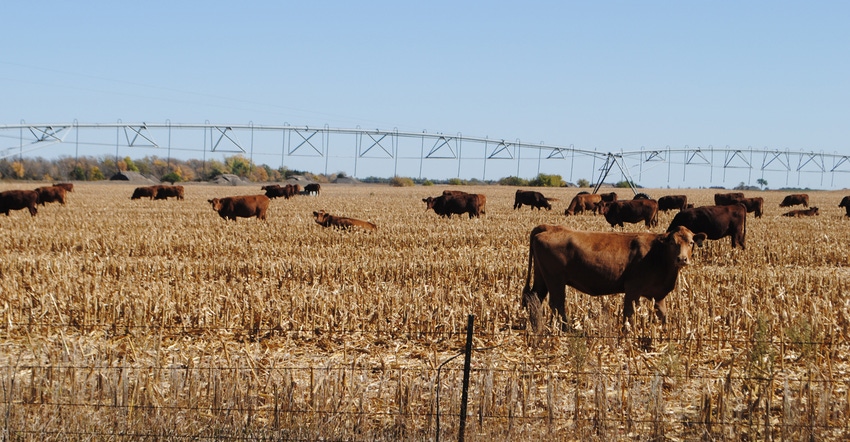Remove cattle from cornstalks when soils begin to thaw
There are few, if any, compaction issues with cattle grazing cornstalks during the winter.

In many portions of the Great Plains states through fall and into early winter, cattle have been able to glean crop residue without much interference from snow and ice. As winter goes on, the major considerations for cattle grazing cornstalks are extended periods of wet spring snow or rain and rising temperatures, which result in frozen soils beginning to thaw.
Daren Redfearn, Nebraska Extension forage and crop residue specialist, says that it is ideal to remove animals before the soils begin to thaw. “We have no observed compaction issues with cattle grazing cornstalks, as long as the soil is frozen,” Redfearn says.
“Soil compaction can be an issue any time of the year,” he explains. “In cropping systems, soil compaction has been attributed to restricted root growth and water infiltration. These impacts occur not only from cattle grazing cornstalks, but also harvesting equipment.”
Research on livestock grazing suggests little to no reduction in soybean plant populations following winter cornstalk grazing, without any apparent negative impacts on grain production, he adds.
“Minor surface compaction can result from grazing, especially during wet weather,” Redfearn acknowledges. “There can also be considerable compaction around watering and feeding areas and trailing in the field. However, grazing compaction usually disappears through the natural wetting and drying, and freezing and thawing processes that occur as we transition from winter to spring.”
So, the soil compaction that restricts root growth doesn’t carry through into the following growing season. And the heavier compacted areas usually are confined to less than 1% of the field.
Redfearn says that it is time to move cattle from cornstalks when few or no husks or leaves remain in the field. “During the late winter and early spring, this can also include times when there are extended periods of wet, muddy conditions,” he adds.
Learn more by contacting Redfearn at [email protected].
About the Author(s)
You May Also Like




.png?width=300&auto=webp&quality=80&disable=upscale)
